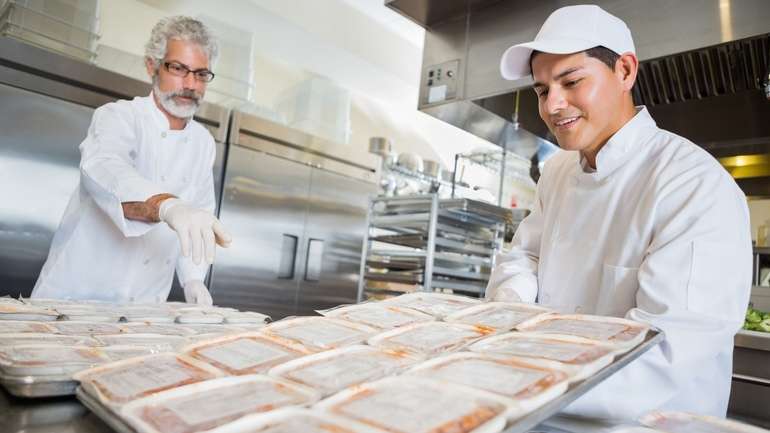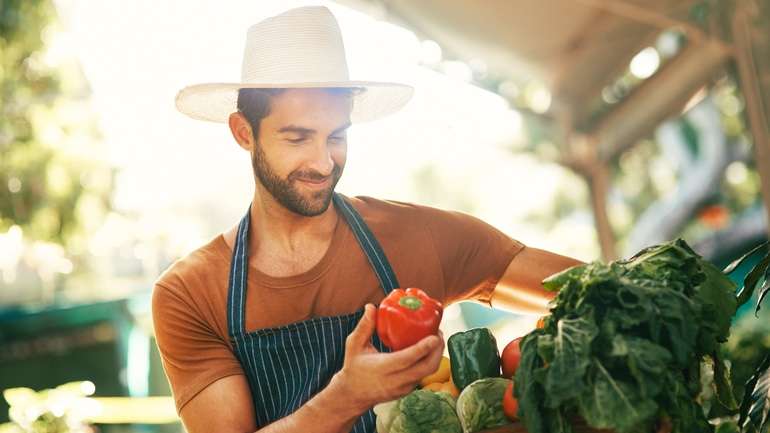Whether you realize it or not, giving back to the community is an important part of running a restaurant.
On the one hand, restaurants unconsciously give back to guests simply by existing – providing a place where people’s lives are lived out. Your venue might be a popular first date spot, or the perfect place to “meet the parents.” Maybe your establishment is where a doting Millennial takes Grandpa for a pint or where a regular finds comfort. Maybe someday someone will propose!
But what about the ways you can purposefully give back to the community around you?
That’s where corporate social responsibility (CSR) comes in.
CSR is defined as a business’ commitment to manage the social, environmental, and economic effects of its operations. Put simply, CSR means giving back to the community in which your business operates in.
Executing a CSR initiative can have many benefits for your business. Not only does it improve your restaurant’s public image, but it’s also crucial to attracting the Millennial demographic. As the Cone Communications Millennial CSR Study found, 91% of Millennials would switch brands to one associated with a cause and 70% say they would pay more to make an impact on issues they care about.
In short, giving back to the community can (and should!) be an important piece of your restaurant’s long-term business plan. In this article, we’ll cover:
- The benefits of giving back to the community
- Different ways to give back
- Examples of successful CSR initiatives

The Benefits of Giving Back
As mentioned above, CSR is one of the keys to attracting Millennial customers. However, there are many other benefits to giving back to the community, including:
- Boost Your Reputation: Showing the community that your restaurant is giving back helps to build a favorable reputation for your brand and increase customer loyalty.
- Increased Employee Satisfaction: Giving employees opportunities to support community causes will help to boost engagement and job satisfaction. In the case of something like Pride Month restaurant celebrations, the cause you’re supporting may actually support your employees’ own community.
- Save Money: Some initiatives (especially eco-friendly changes) can improve operational efficiencies and boost your bottom line.
- Attract New Employees: With many restaurants facing labor shortages, a strong CSR policy can make your restaurant more appealing to passionate young job seekers.
- Invest in the Local Community: This one is pretty general, but the community you operate in is your business’ home. Any actions that make your community stronger will only benefit your restaurant!
How to Give Back
It’s clear that giving back to the community is good for business and for the local community. But before you start organizing a fundraiser for the local animal shelter, think about the causes that are the right fit for your restaurant. This might mean revisiting your mission statement and company values to figure out which causes align with your business.
Whether your focus is on sustainability or tackling a tough social issue, there are many effective ways to give back without breaking the bank and many great organizations doing impactful work. While this list is in no way comprehensive, we’ve highlighted some favorites to give you a few ideas of what’s out there.
Donate Food or Meals
Food and meal donations are one of the most impactful and hassle-free ways that restaurants can give back. And luckily, technology is making this easier than ever.
A growing number of apps are helping restaurants solve the problem of hunger by ensuring that food makes its way into growling bellies and not the landfill.
Here are just a few platforms making a difference:
Dine Out for No Kid Hungry: With the goal of ending childhood hunger in America, Dine Out for No Kid Hungry is an annual fundraising event held in September. To participate, it’s as easy as donating a percentage of sales. For those restaurants that want to get a little more creative, participants of the past have a coupon for a future visit in exchange for a donation. Some participants have even created a custom menu item that donates a portion of proceeds to the cause.
ZeroPercent: According to the USDA, 30% to 50% of food produced is thrown out. The Chicago-based organization ZeroPercent is working to solve this problem. When a restaurant has excess food that would otherwise be tossed, managers contact ZeroPercent who then picks up and donates the food to a participating charity or shelter. On the daily, ZeroPercent saves approximately 1,500 pounds of food that otherwise would have gone straight into the garbage.
Copia: San Francisco-based Copia allows restaurants to request a pick up of excess food from their platform. From there, a “food hero” picks up the bundle and delivers it to a shelter. On the app’s platform, businesses can then see the direct impact of their donations in the form of profiles and stories of the people they’ve fed.
MealShare: Using a “buy one, give one” model, restaurants that have partnered with Canada’s MealShare program use the MealShare logo on their menu beside items that are a part of the program. When a guest orders that particular dish, they get their order as usual and MealShare donates a meal to a youth in need.

Donate a Percentage of Profits
While donating food is great, cash is king for many charities. If you’re a restaurant owner, an easy way to raise funds for charity is to dedicate a special event or menu item to charity. You can then set aside a certain portion of the proceeds to give directly to the organization.
These kinds of charitable initiatives can take place-year round – however, some restaurants use holidays or special occasions as a good opportunity to support a local cause. For instance, Washington, D.C.-based Osteria Morini recently used Pride Month and the Capital Pride Festival to create a five-layer rainbow Italian almond cake. Proceeds from the Pride-themed cake were then donated to Casa Ruby, a local LGBTQ organization.
This approach to giving back can be particularly impactful if your community is in the midst of a crisis. For example, during the height of the Flint, Michigan water crisis, the Da Edoardo Foxtown Grille restaurant teamed up with the Flint Child Health and Development Fund to donate 10% of all lunch and dinner food sales to causes trying to provide clean water. On a large scale, restaurants around the world launched their own fundraising initiatives to charities fighting the wildfires in Australia.
Set Aside Time for Volunteering
While food and cash are great, sometimes volunteering time can have the biggest impact. Today it’s becoming increasingly common for companies to give their employees paid time off for volunteering.
And it’s not just the corporate giants offering this kind of socially conscious perk. Many restaurants are adopting this practice and bake volunteering into their corporate values.
Last year, Starbucks teamed up with the non-profit volunteer program Points of Light to launch a pilot program where 36 employees would continue to receive their full pay package while working at select non-profit organizations for half the work week. That initiative added up to more than 17,000 hours of community service.
While most restaurants can’t implement a volunteer program as ambitious as Starbucks’, simply giving employees a day or two of paid time off to volunteer can make a big difference. For instance, the growing chain Tupelo Honey has a “Honeypot” program that includes benefits such as charitable donations and volunteer days for employees who have been there employed for over a year.
Invest in the Future of the Industry
By supporting a not-for-profit or fund that aids in culinary education, the difference you’re making is two-fold. First, you’re helping the industry prosper by adding more talent to the pool. Second, you’re helping to change and improve individual lives by providing opportunities that wouldn’t otherwise be available.
There are a number of different local scholarships across the U.S. and Canada, but one that stands out is ProStart. ProStart is the National Restaurant Association’s program that aims to bring the culinary arts and restaurant business into high school classrooms. Their goals include exposing underlying talent and introducing students to new interests.
Under a “work and learn” ethos, participating students are given the opportunity to attain scholarships and access to mentorship after the completion of a two year industry-based program. The program itself equips students with hands on training in all aspects of hospitality. Chefs and restaurateurs can get involved through monetary donations towards the NRAEF scholarship fund, registering as a mentor, or by hiring a ProStart student or alumni.
Make Sustainability A Priority
Making your restaurant a little more sustainable can be great for the planet and for your local farmers. By purchasing ingredients directly from local farmers or foodie entrepreneurs, you can provide a valuable source of income for those who might otherwise be left out of large, corporate sourcing agreements.
One way that restaurants are connecting with local farmers is through platforms like Farm’d. Farm’d is a B2B marketplace that connects food buyers like restaurants with local food growers. The creator of Farm’d is actually a former restaurateur who started the business after he was unable to find an economical way to buy local produce. Today, the Farm’d marketplace has more than 400 restaurants and retailers on the platform, and more than 70 farms.
If marketplaces like Farm’d aren’t available in your area, organizations like REAP Food Group work to connect the agricultural industry with the food industry. Through the program, restaurants can secure fresh, in-season ingredients to create sustainable menus, while local farmers secure a stable source of income.

Support Your Local Community
While it’s great to take on major social and environmental issues, giving back to your community doesn’t always require thinking big. While it may not solve hunger in America, local initiatives such as hosting a fundraising event for your local animal hospital, youth baseball team, or elderly care home can make a huge difference.
Assisting local non-profits is another way to get involved on a more micro level. Take DC Central Kitchen for example. The organization is giving back to the community in a myriad of ways, including salvaging and repurposing food waste, delivering fresh produce and healthy snacks to corner stores, and by equipping unemployed adults with the skills to enter the culinary workforce.
In a 14-week intensive training program, participants who come from backgrounds of incarceration, addiction, homeless, and trauma get culinary training and complete an internship on scholarship, so there is no cost to them.
Donate Used Equipment or Decor
If you’re upgrading your equipment, don’t just toss that old stove or prep table curbside! Local non-profits, schools, and other community organizations are always looking to accept used equipment in order to outfit homes and kitchens that would otherwise have nothing. Not to mention, donating equipment keeps heavy, environmentally unfriendly materials out of landfills and you might be eligible for a nice tax deduction.
For instance, the Rochester, New York-based soup kitchen A Meal and More accepts restaurant-grade kitchen appliances and equipment. This equipment allows the organization to expand its efforts to serve nutritious midday meals to people in need.
While this list is in no way comprehensive or geographically specific, chances are there are plenty of not-for-profits and other organizations doing great social good near you. And hey, if there isn’t already an organization supporting a cause that you wish to stand for, then maybe it’s the perfect opportunity for you to step up and start giving back to the community yourself.
Want to attract socially & environmentally conscious consumers?
Free social media templates for your restaurant
Sign up for our free weekly TouchBistro Newsletter







